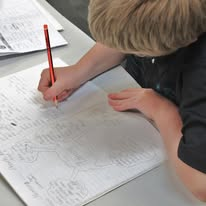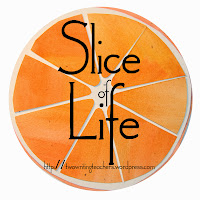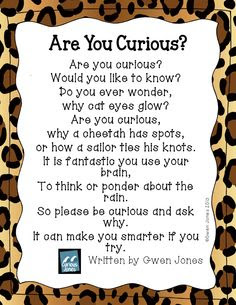Classroom Approaches Promoting A Young Writer’s Sense of Identity
In the classroom while working with fellow educators the goal of helping young writers to develop a genuine sense of their own identity as writers has shone like a bright flame. Children’s writing identities will either thrive or fail to bloom according to what happens with the writing experiences encountered in the classroom.
A teacher brings with them enormous capacity to influence both the personal and world view a child develops regarding writing. With this in mind, the nurturing of writing identity must remain at the forefront of a teachers words and actions every time they enter the classroom.
Teachers' identities as writers (or non-writers) tend to be highly influential factors in the development of students’ writing identities. The power to influence should never be underestimated. It is therefore important for a teacher to be able to draw from an identity perspective to illustrate how people create new activities, new worlds, and new ways of being through writing. It creates a tangible model upon which the less experienced writer may draw confidence, support, inspiration and ultimately a sense of their writer identity.
From the outset it is important to refer to young learners as ‘writers’ and mindfully impress upon them that what they are doing matters. It matters to them as a writer. It matters to a reader. I often introduce myself by stating –‘Just like you, I am both a reader and a writer.’ I then set about consciously unpacking the inner workings of my reading and writing lives. I mindfully reveal my identity.
It is important to also impress upon these young writers that they are writing in order to produce words someone else will read. They are not writing to have their writing merely put on display. From the outset the notion of audience is established -and audiences differ according to whom your words are directed.
The young writers must be given the opportunity to experience all the things writers actually do. With this in mind, striving to dispel the false assumption that writing is something you do at school becomes vitally important. I frequently share photographs of my own writing places –parks, gardens, cafes, beaches, airports and my study, where I am surrounded by shelves of curated books written by my author mentors. Frank Smith referred to them as- unwitting collaborators. They go with me every time I enter a classroom and meet another group of expectant writers. They assist me to teach more effectively.
Invite children to inform you of the places they might go to write. Writing beyond the walls of the classroom can also occur within the school environment –inside and outside (weather permitting). Young writers deserve the opportunity to better understand their options.
When students enter the classroom at the start of a new school day joyfully announcing ‘I know what I’m going to write about today!’ we are experiencing something quite transformational for both child and teacher.
The writer is bringing the outside in!
This development can be further supported when a teacher freely shares artefacts and ephemera collected from their own world beyond the classroom. Sharing their unique stories, observations and notebook entries can highlight the varied influences impacting writing.
Inviting in cultural capital in the form of interests, hobbies, and passionate pursuits also contributes to the broadening of the writing horizon. Allow acquired knowledge and inbuilt curiosity as a learner to shine through. Teacher identity is gradually revealed through such deliberate actions and the positions adopted in relation to authentic writing experiences.
It’s an invitation to the impressionable young writer that they too can easily embrace the writing and learning behaviours laid before them by a more experienced writer.
When a teacher talks about the journey from the spark of an idea through to a shared piece, it demystifies the act of writing for students and it becomes reachable for the less experienced writer. By modelling and demonstrating the process, a teacher is able to show the gradual development of a piece of reader friendly writing through mindful application of rereading, revision, editing and reflection- all important strategies for the young writer to see valued by a more experienced writer. The more children write in this nurturing environment, the more likely they are to want to join in, write in places other than the school and investment more deeply in the writing they do. Identity lives here.
Looking for signs of emerging identity among young writers flows from such teacher actions:
Are they keen to redraft and revise?
Do they easily initiate personal writing projects?
Do they self-regulate their writing behaviours?
Does their writing demonstrate purpose?
Are they becoming problem solvers?
Feedback for effort is a powerful mechanism for empowering student writers and increasing engagement. Remind your students of all the independent actions you witness during the writing workshop. Let them know, you are noticing such behaviours. Identity thrives on this…
Teachers’ writing identities tend to shape the delivery of their writing instruction. This in turn affects attitudes and values, and is ultimately passed to student writers. This simple understanding is an affirmation of the value of teachers writing with students. Writing is the way a teacher is able to establish their own expertise. It is in such action that teacher –writers demonstrate their potential to positively impact attitudes to writing within their immediate community of writers. A teacher who writes is better placed to problem solve those thorny issues surrounding the teaching of writing. Having a position of firsthand knowledge provides an enormous advantage. They are able to announce, with authority: ‘Here are some things I know, because like you, I write.’
Sam, a young teacher was discussing his writer’s notebook with me- ‘I have come to understand just how influential a teacher can be, Sam told me. ‘Recently, I have been writing raps in my notebook, and began sharing them. A week later I noticed about 10 of my student writers had taken up the same challenge. I now understand what you’ve been saying to me about writing with the kids.’
This revelation made my heart sing…
Alan j Wright
Education Consultant, Writer.








Comments
Post a Comment